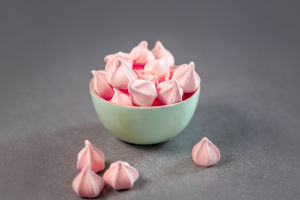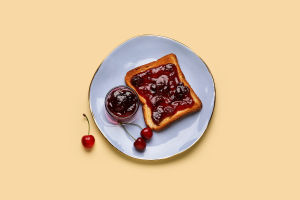Hey Lykkers, Sponge cake is a timeless dessert loved for its light, airy texture and its ability to soak up delicious flavors.
No matter you're enjoying it as a simple tea-time treat or using it as the base for a layered masterpiece, sponge cake is versatile and oh-so-satisfying.
1. What is Sponge Cake?
Sponge cake is a type of cake known for its light and fluffy texture, achieved primarily through the beating of eggs, which are the cake's primary leavening agent. Unlike dense cakes, sponge cake is soft and airy, making it the perfect base for a wide variety of desserts.
No Heavy Fats: Sponge cake is typically made without butter or oil, relying on the whipped eggs to create its volume and structure.
Simple Ingredients: Flour, sugar, eggs, and a touch of vanilla are all you need to make a basic sponge cake. It’s this simplicity that makes it a popular choice for many bakers.
2. Key Tips for Making the Perfect Sponge Cake
Sponge cake may seem simple, but getting it just right requires a few tricks and tips. Here’s how to make sure your sponge cake comes out perfectly every time:
Beat the Eggs Well: The key to a fluffy sponge cake is thoroughly beaten eggs. Use a stand mixer or electric whisk to beat your eggs until they become pale, thick, and nearly triple in volume. This process incorporates air, giving the cake its light texture.
Fold, Don’t Mix: When combining the flour and egg mixture, gently fold the flour in to avoid deflating the eggs. This will help maintain the lightness of the batter.
Use Cake Flour: Cake flour has a finer texture and lower protein content than all-purpose flour, which results in a more delicate crumb.
3. Sponge Cake Variations
Sponge cake can be adapted in countless ways to suit different tastes and occasions. Here are some popular variations:
Classic Victoria Sponge: A British favorite, the Victoria sponge is filled with jam and whipped cream for a simple yet elegant treat.
Genoise Sponge: This Italian and French version adds melted butter to the batter for a slightly richer flavor.
Swiss Roll: A thin sponge cake is filled with cream or jam and rolled into a log for a fun and decorative dessert.
4. Creative Uses for Sponge Cake
Sponge cake’s lightness and versatility make it a go-to base for many delicious desserts:
Layer Cakes: Use sponge cake as the foundation for multi-layered cakes filled with buttercream, fruit, or chocolate ganache.
Trifles: Layer pieces of sponge cake with custard, fruit, and whipped cream for a classic English trifle.
Tiramisu: Replace ladyfingers with slices of sponge cake for a twist on this coffee-flavored Italian dessert.
5. How to Store Sponge Cake
Sponge cake can dry out quickly if not stored properly. Here’s how to keep it fresh:
Wrap It Well: Store your sponge cake in an airtight container or wrap it tightly in plastic wrap to prevent it from drying out.
Freeze for Later: Sponge cake freezes well. Just wrap the cake in plastic wrap and foil before freezing. When you’re ready to use it, let it thaw at room temperature.
Vanilla Sponge Cake | How to make perfect sponge cake | easy cooking with das
Video By easy cooking with das
Sponge cake is a beloved classic for a reason—it’s light, fluffy, and incredibly versatile. If you’re enjoying it plain or dressing it up with fillings and frostings, sponge cake is sure to delight every time. With just a few simple ingredients and the right technique, you can bake the perfect sponge cake for any occasion.


